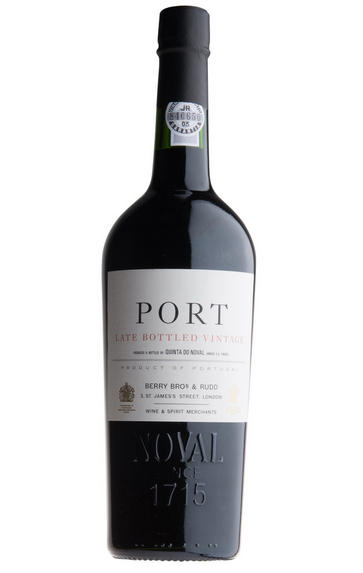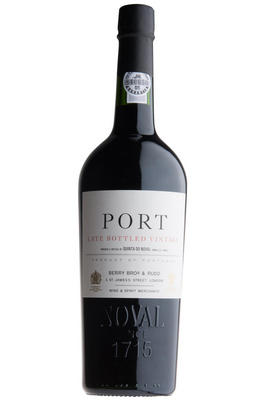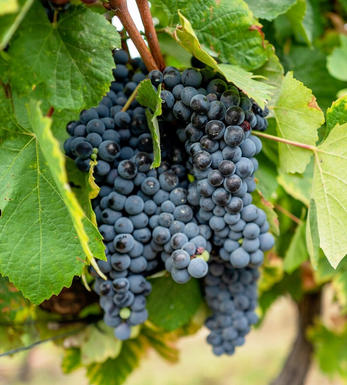
2011 Berry Bros. & Rudd Late Bottled Vintage Port by Quinta do Noval

Critics reviews
Mark Squires - 28/10/2016
About this WINE

Quinta do Noval
Quinta do Noval was first owned, for more than a century, by the Rebello Valente family who were given it by the Marquês do Pombal, Portugal’s Prime Minister. It was later owned by the Van Zeller family who had to rebuild following a catastrophic fire in 1981. Finally Quinta do Noval was sold to AXA insurance group in May 1993.
Quinta do Noval is one of the most evocative of names and the maker of the most famous of all Vintage Ports - Naçional.
The scourge of European vineyards in the late 19th century, the phylloxera aphid was thwarted at Noval's best vineyard by intense fumigation and, rather than grafting the vines on to American root-stocks, which was the usual practice, they managed to survive using Portuguese stock - hence "Naçional".
Noval made its reputation with the declaration of 1931. Due to world recession and vast shipment of 27’s, it was one of only three shippers declared in 1931. Noval introduced the first stenciled bottles and in 1958 the first house to introduce a Late Bottled Vintage.
The Quinta do Noval itself lies perfectly situated along a steep hillside in the heart of the Douro Valley where the vines flourish and produce the highest-grade fruit.
Noval today appears to be thriving under the ownership of insurance group AXA with Managing Director Christian Seely, ensuring that their Vintage Port remains one of the most sought-after wines. AXA is a group which already includes a string of leading Bordeaux châteaux.
![LBV [Late Bottled Vintage] LBV [Late Bottled Vintage]](https://media.bbr.com/i/bbr/region-4384?img404=Default_Banner&$CardPDP$&fmt=auto)
LBV [Late Bottled Vintage]
Usually known simply, and rather jauntily, as ‘LBV’, Late Bottled Vintage Port starts life in exactly the same way as a true Vintage Port and can provide an excellent, earlier-drinking alternative.
Late Vintage Port is made entirely from grapes harvested in a specific year from a variety of vineyards, but is then left to age in barrel for four to six years before bottling, compared to around 18 months for Vintage. LBV does not have the grandeur, intensity and concentration of Vintage Port, but the finest examples boast mature, well-rounded, velvety fruit and a rich, smooth finish.
On the label, both the vintage and the bottling date must be shown, and ‘Late Bottled Vintage’ must be clearly stated so as to avoid any confusion. There are two distinct styles of LBV: Traditional LBVs tend to be the best, and are usually from a good vintage that has not been declared. They are unfined and unfiltered, and can age and improve for several years after bottling. They also throw a sediment so require decanting before serving.
Most LBV, however, is filtered and cold-stabilized. These may lack the power and structure of traditional LBVs but are at their peak as soon as they are released and do not require decanting. Excessive filtering can strip LBVs of their character, however, and poorer examples are little better than a standard Ruby Port.

Port Blend
There are around 40 different grape varieties permitted in the production of Port - however the vast majority of Ports are produced from a blend of 5 grapes - Touriga Nacional, Touriga Francesca, Tinta Barroca, Tinta Roriz, and Tinto Cão.
Touriga Nacional produces small, dark-skinned grapes that produce opaque black wines of great extract and high tannins - it gives grip, body, and structure to the blend.
Touriga Franca has a thinner skin and consequently produces wines lighter in colour and tannins than Touriga Nacional. It contributes fruit, aroma, suppleness and roundness.
Tinta Roriz is the Portuguese name for Tempranillo and its high sugar content and low acidity contribute colour and fruit.
Tinta Barroca which is normally grown at highish altitudes and on north-facing slopes, is prized for producing wines of delicacy, finesse and with smooth, velvety fruit. It brings elegance and sweet, ripe fruit to the final blend.
Finally Tinto Cão produces fine and complex wines, though it is probably the least important of the 5 grapes as its painfully small yields have reduced plantings to almost insignificant levels.


Buying options
Add to wishlist
Description
This wine has been made for us especially by the talented winemaking team at Quinta do Noval, which has been making fine Port since 1715. One of the most evocative of names, Quinta do Noval produces the most famous of all Vintage Ports – Naçional. It was also the first House to produce a Late Bottled Vintage Port in 1958.
This is a rich, dark Port with ripe aromas of cherries and blackberries. Vibrant, concentrated fruit is backed up by silky tannins. The complex structure will enable considerable ageing but its luscious ripe fruit can be enjoyed today. The wine is unfiltered and, as it ages, may throw a sediment and need decanting.
wine at a glance
Delivery and quality guarantee